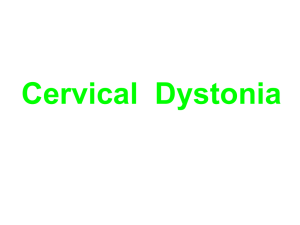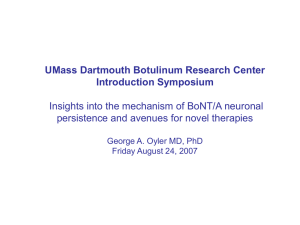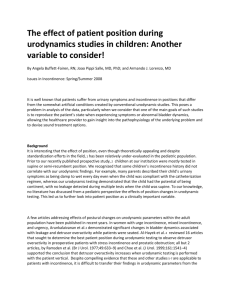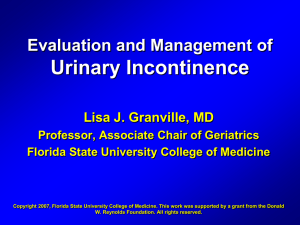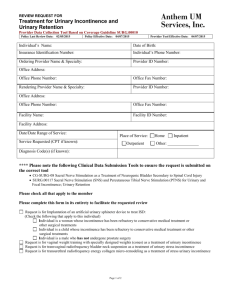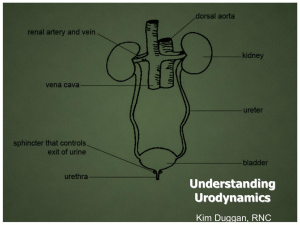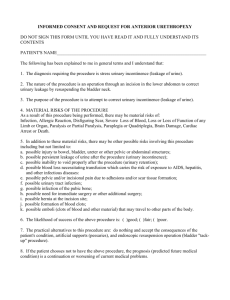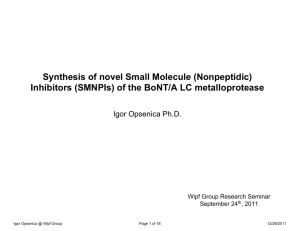Low doses of Botulinum A toxin in the treatment of refractory
advertisement
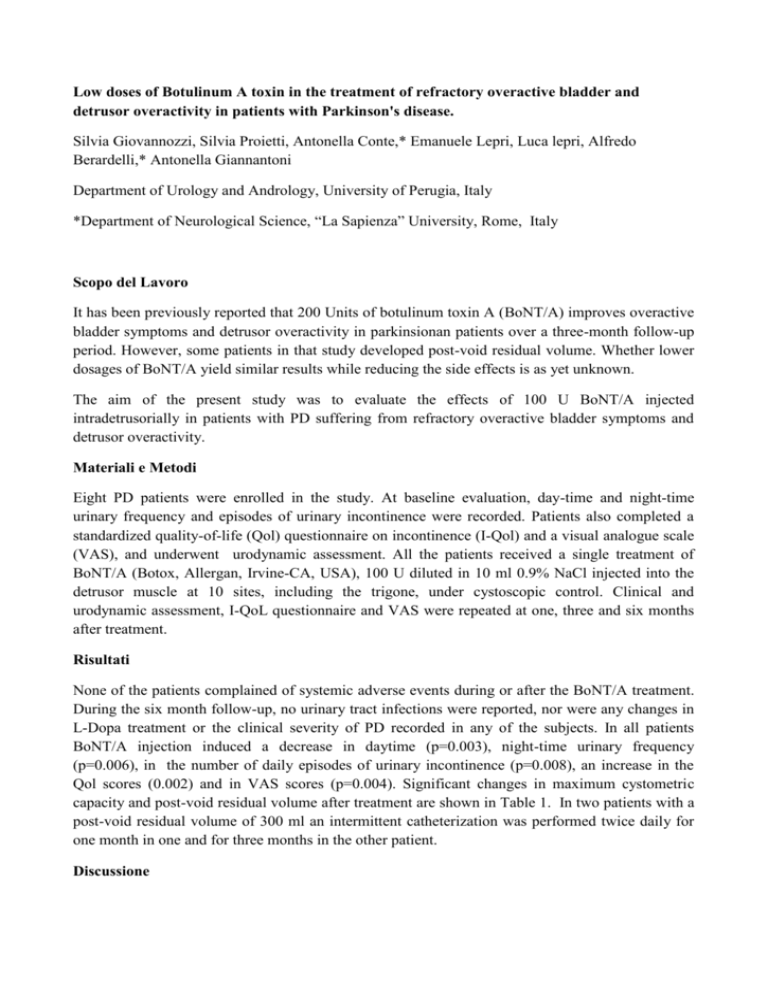
Low doses of Botulinum A toxin in the treatment of refractory overactive bladder and detrusor overactivity in patients with Parkinson's disease. Silvia Giovannozzi, Silvia Proietti, Antonella Conte,* Emanuele Lepri, Luca lepri, Alfredo Berardelli,* Antonella Giannantoni Department of Urology and Andrology, University of Perugia, Italy *Department of Neurological Science, “La Sapienza” University, Rome, Italy Scopo del Lavoro It has been previously reported that 200 Units of botulinum toxin A (BoNT/A) improves overactive bladder symptoms and detrusor overactivity in parkinsionan patients over a three-month follow-up period. However, some patients in that study developed post-void residual volume. Whether lower dosages of BoNT/A yield similar results while reducing the side effects is as yet unknown. The aim of the present study was to evaluate the effects of 100 U BoNT/A injected intradetrusorially in patients with PD suffering from refractory overactive bladder symptoms and detrusor overactivity. Materiali e Metodi Eight PD patients were enrolled in the study. At baseline evaluation, day-time and night-time urinary frequency and episodes of urinary incontinence were recorded. Patients also completed a standardized quality-of-life (Qol) questionnaire on incontinence (I-Qol) and a visual analogue scale (VAS), and underwent urodynamic assessment. All the patients received a single treatment of BoNT/A (Botox, Allergan, Irvine-CA, USA), 100 U diluted in 10 ml 0.9% NaCl injected into the detrusor muscle at 10 sites, including the trigone, under cystoscopic control. Clinical and urodynamic assessment, I-QoL questionnaire and VAS were repeated at one, three and six months after treatment. Risultati None of the patients complained of systemic adverse events during or after the BoNT/A treatment. During the six month follow-up, no urinary tract infections were reported, nor were any changes in L-Dopa treatment or the clinical severity of PD recorded in any of the subjects. In all patients BoNT/A injection induced a decrease in daytime (p=0.003), night-time urinary frequency (p=0.006), in the number of daily episodes of urinary incontinence (p=0.008), an increase in the Qol scores (0.002) and in VAS scores (p=0.004). Significant changes in maximum cystometric capacity and post-void residual volume after treatment are shown in Table 1. In two patients with a post-void residual volume of 300 ml an intermittent catheterization was performed twice daily for one month in one and for three months in the other patient. Discussione In all patients 100 U of BoNT/A induced clinical and urodynamic improvements, that lasted for at least six months. Despite of lower injected doses of BoNT/A, these PD patients presented with post-void residual volume during follow up. Nevertheless, the need to perform IC was well accepted in the two patients who needed of due to the concomitant disappearance of urinary incontinence. The presence of post-void residual volume after 100 U of intradetrusorial BoNT/A in PD patients is consistent with the results reported in patients with multiple sclerosis treated with 100 U. Messaggio conclusivo Intradetrusorial injection of 100 U of BoNT/A induced clinical and urodynamic improvement of overactive bladder symptoms in patients with PD that lasted for at least six months. Figure 1. Maximum cystometric capacity (MCC) and post-void residual volume (PVR) in patients with Parkinson's disease at baseline, one, three and six months after BoNT/A injection. Each bar represents mean data ±SE.


